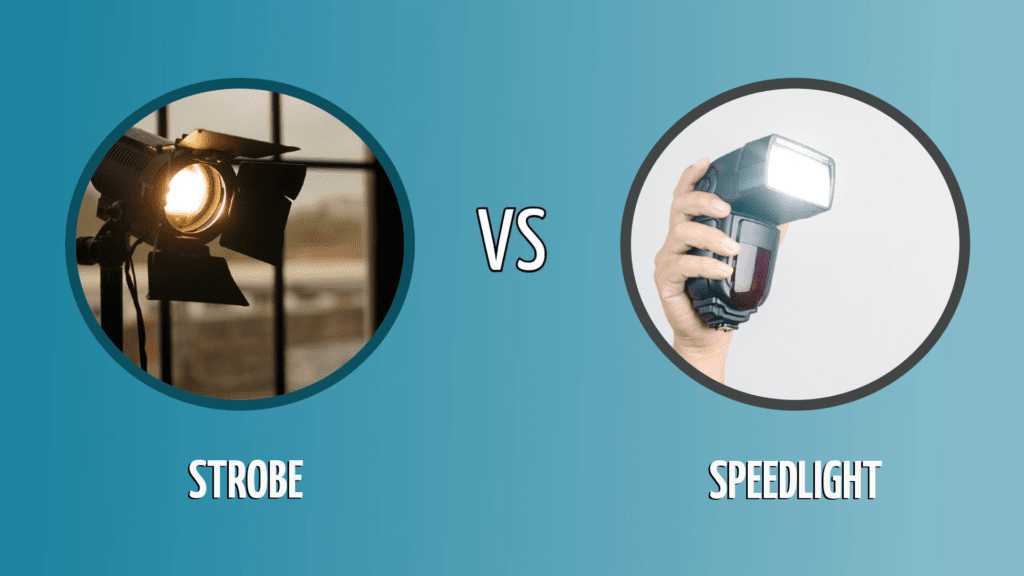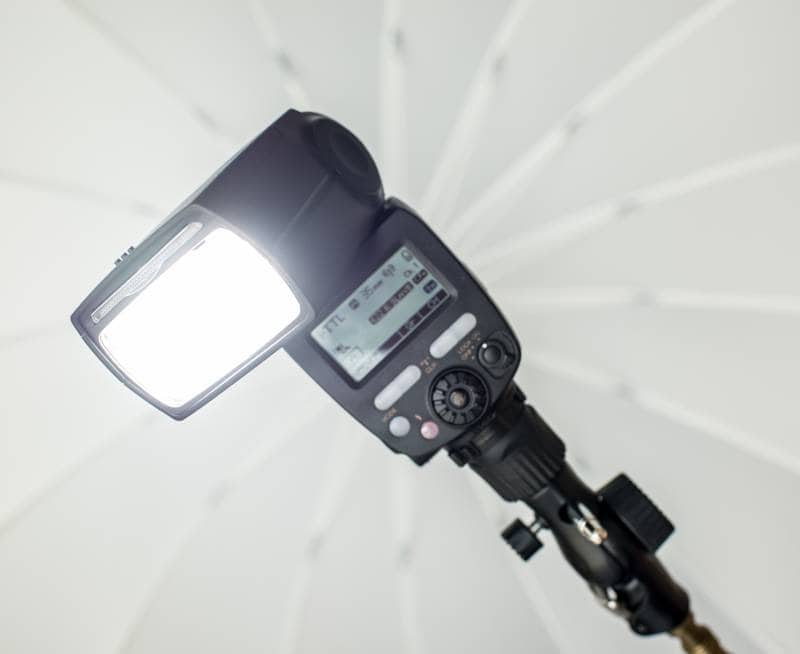Strobes vs Speedlights: Which One Should I Use?
Last Updated on

When it comes to photography, appropriately lighting your subject is one of the most important factors in attaining incredible images. Unfortunately, natural light doesn’t do the trick 100% of the time, so artificial lighting tools are a necessity to get the best end result. Strobes and speedlights are a couple of types of this artificial lighting that can complement your scene, but which one should you use?
In this guide, we’ll show you the differences so you can make the right decision on which Is right for your needs.

Overview of Strobes

How It Works
Strobes are a type of studio light used by professional photographers that have a stand-alone design. They are extremely powerful and work well indoors and outdoors because they cover a lot of area and distance. Strobes are almost always used on a tripod or stand for stability, and sandbags may be necessary to keep them rock-solid. These lights flash temporarily on a subject for illumination.
Uses
Strobes are used in almost all professional portraiture businesses, as well as high-production studios. It isn’t uncommon to see them outside either, and they are often used for car shoots as well. Combined with an umbrella or diffuser, they can achieve many different creative looks that would otherwise be impossible without the additional light.
- Powerful, effective lighting in almost any situation
- Easy to use
- Heavy and cumbersome to carry around
- Expensive
- Can’t be used for video
- Requires AC power most of the time

Overview of Speedlights

How It Works
Speedlight flashes are used as a means to control the lighting of a subject by adjusting fractional increments, which means that the light only flashes temporarily like a strobe. These lights may have an automatic feature that engages based on what your camera thinks is sufficient exposure and shutter speed. They are attached through a camera on its hot shoe mount and by wired or wireless communication. The recycle time of speedlights is 2–5 seconds.
Uses
Speedlights are used in many applications, such as portraiture, events, fast-action sports, wildlife, and interiors. However, they can be used for outdoor scenes in plenty of cases. Some photographers use diffuser caps to cut off highlights from the bare light, which is especially needed for lighter skin tones. This can also be achieved by bouncing the light off of other surfaces. It’s common to see more than one strobe being used at a time to control shadow angles as well.
- Portable and convenient
- Affordable
- Can be mounted directly to cameras
- Not as powerful as other options
- They can’t be used for video

Conclusion
Lighting is the most important part of photography by far, but not all types of lighting work in all scenarios. The great thing about both of these options is that they can help people who need flexibility in low-light scenes or places where they can maximize dynamic range. In the end, it’s best to use speedlights for a fast-paced environment, whereas strobes are better suited for the brightest image.
Featured Image Credit: Left – maradon 333, Shutterstock; Right – BonNontawat, Shutterstock
About the Author Robert Sparks
Robert’s obsession with all things optical started early in life, when his optician father would bring home prototypes for Robert to play with. Nowadays, Robert is dedicated to helping others find the right optics for their needs. His hobbies include astronomy, astrophysics, and model building. Originally from Newark, NJ, he resides in Santa Fe, New Mexico, where the nighttime skies are filled with glittering stars.
Related Articles:
Monocular vs Telescope: Differences Explained (With Pictures)
How to Clean a Refractor Telescope: Step-by-Step Guide
How to Clean a Telescope Eyepiece: Step-by-Step Guide
How to Clean a Rifle Scope: 8 Expert Tips
What Is a Monocular Used For? 8 Common Functions
How to Clean a Telescope Mirror: 8 Expert Tips
Brightfield vs Phase Contrast Microscopy: The Differences Explained
SkyCamHD Drone Review: Pros, Cons, FAQ, & Verdict
